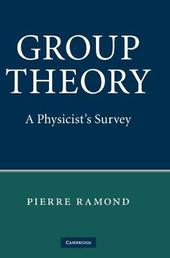
|
Group Theory: A Physicist's Survey
Hardback
Main Details
| Title |
Group Theory: A Physicist's Survey
|
| Authors and Contributors |
By (author) Pierre Ramond
|
| Physical Properties |
| Format:Hardback | | Pages:322 | | Dimensions(mm): Height 255,Width 178 |
|
| Category/Genre | Maths for engineers |
|---|
| ISBN/Barcode |
9780521896030
|
| Classifications | Dewey:530.1522 |
|---|
| Audience | | Professional & Vocational | |
|---|
| Illustrations |
65 Line drawings, unspecified
|
|
Publishing Details |
| Publisher |
Cambridge University Press
|
| Imprint |
Cambridge University Press
|
| Publication Date |
13 May 2010 |
| Publication Country |
United Kingdom
|
Description
Group theory has long been an important computational tool for physicists, but, with the advent of the Standard Model, it has become a powerful conceptual tool as well. This book introduces physicists to many of the fascinating mathematical aspects of group theory, and mathematicians to its physics applications. Designed for advanced undergraduate and graduate students, this book gives a comprehensive overview of the main aspects of both finite and continuous group theory, with an emphasis on applications to fundamental physics. Finite groups are extensively discussed, highlighting their irreducible representations and invariants. Lie algebras, and to a lesser extent Kac-Moody algebras, are treated in detail, including Dynkin diagrams. Special emphasis is given to their representations and embeddings. The group theory underlying the Standard Model is discussed, along with its importance in model building. Applications of group theory to the classification of elementary particles are treated in detail.
Author Biography
Pierre Ramond is a Distinguished Professor at the University of Florida and Director of the Institute for Fundamental Theory. He has held positions at FermiLab, Yale University and Caltech. He has made seminal contributions to Superstring Theory and the theory of neutrino masses, and is a member of the American Academy of Arts and Sciences.
Reviews"The books construction is straightforward... Group Theory: A Physicist's Survey successfully introduces physics model builder to the most likely toold os choice for future constructions." Robert Gilmore, Physics Today
|